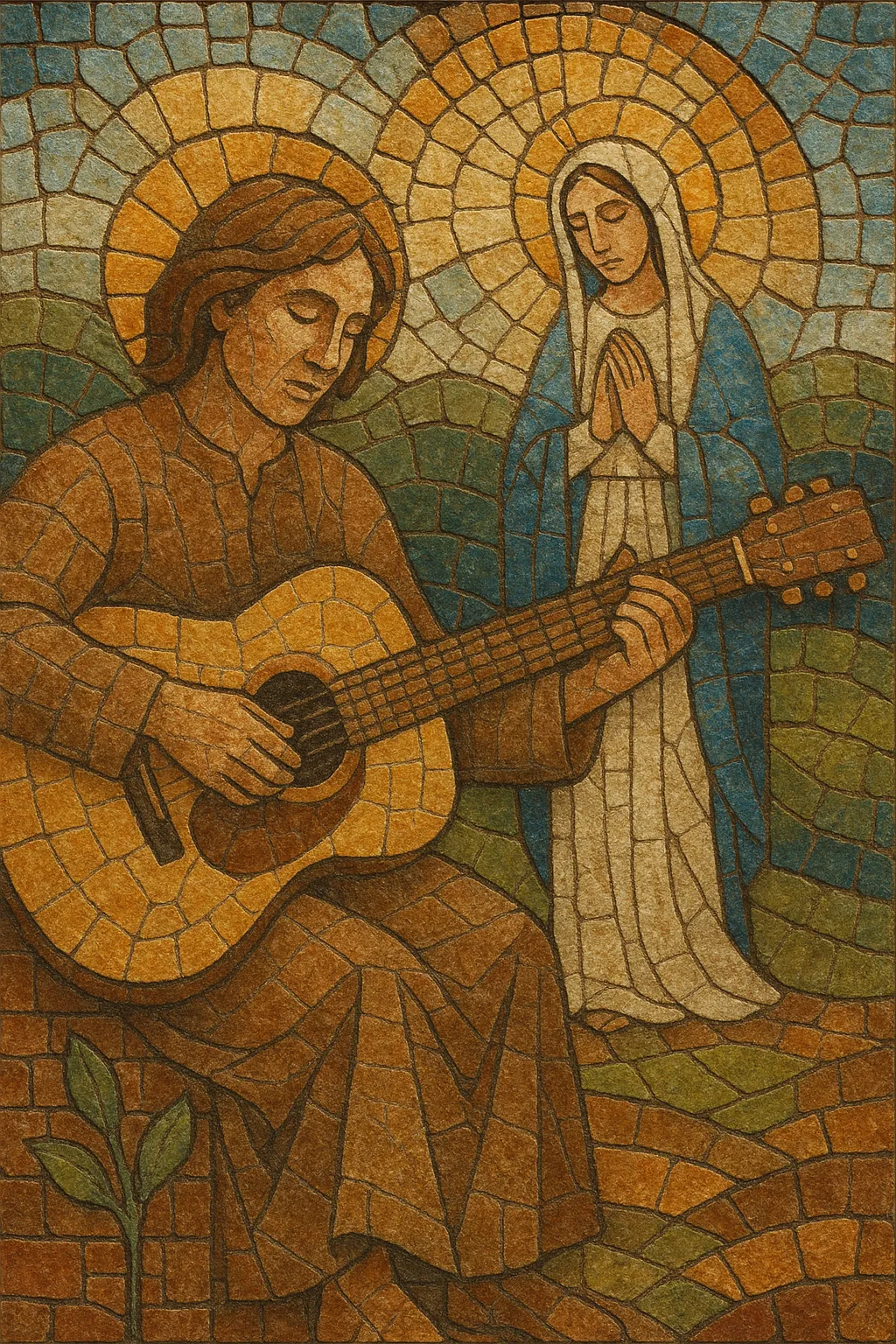
Christian folk is a strand of faith-centered songcraft that marries the acoustic intimacy and storytelling of the folk revival with explicitly Christian themes.
It typically features fingerpicked or gently strummed acoustic guitars, simple diatonic harmonies, close vocal harmonies, and narrative lyrics that paraphrase Scripture, recount testimonies, or offer prayerful reflection. Unlike arena-oriented contemporary worship, Christian folk tends to be quieter, lyric-forward, and rooted in the singer‑songwriter tradition, often suitable for small gatherings, living rooms, or contemplative church settings.
Christian folk grew out of the 1960s American folk revival, which emphasized acoustic instrumentation, social conscience, and narrative songwriting. As the Jesus Movement spread along the U.S. West Coast, many young converts brought the folk idiom into coffeehouses, college ministries, and informal worship, reframing the era’s singer‑songwriter aesthetics around biblical themes and personal faith.
In the early 1970s, "Jesus music" circuits, church coffeehouses, and independent labels fostered a wave of acoustic, testimony‑driven recordings. Artists blended traditional hymnody, gospel earnestness, and folk storytelling, establishing a template for soft‑spoken, scripture‑anchored songs that could be sung in home groups or small congregations.
As Contemporary Christian Music (CCM) professionalized, folk‑leaning artists found wider audiences. Albums foregrounded lyrical depth, acoustic textures, and thoughtful arrangements (hammered dulcimer, mandolin, and piano alongside guitar). This period cemented Christian folk’s reputation for devotional storytelling and plainspoken theology.
The rise of indie folk and DIY production brought a new generation of faith‑based singer‑songwriters. Many blended Celtic and Americana colors, congregational choruses, and contemplative arrangements, making Christian folk a bridge between private devotion, small‑group worship, and the broader singer‑songwriter world.

